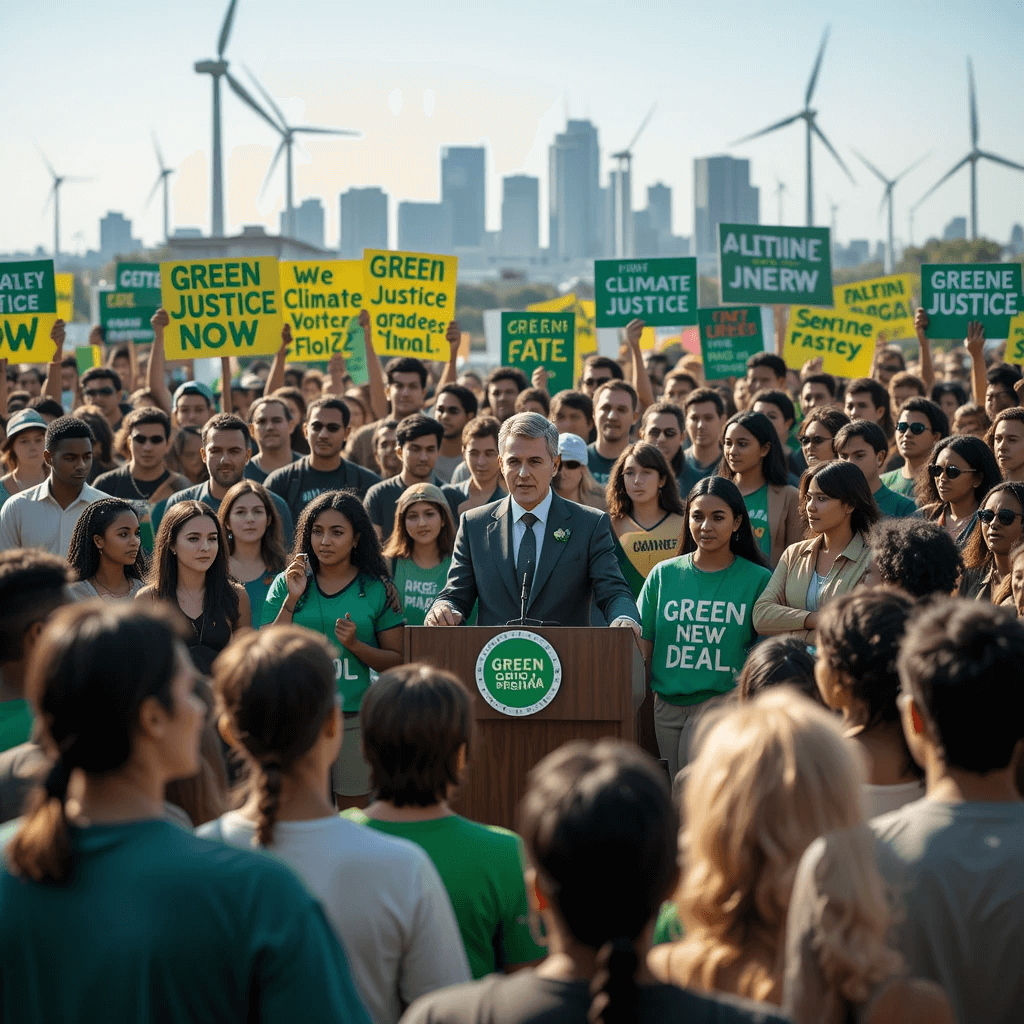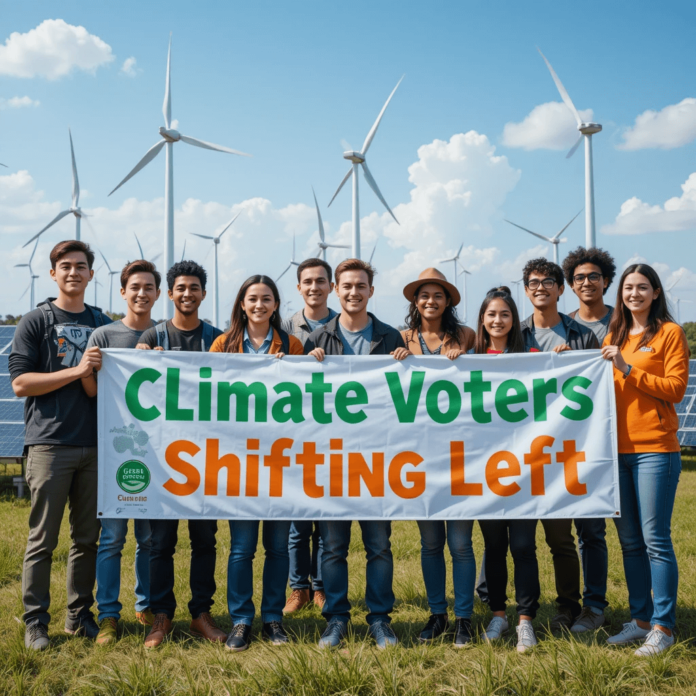In 2025, the Green Party’s focus on climate action is resonating with voters prioritizing environmental sustainability. Consequently, are climate voters shifting left, drawn to the Green Party’s bold policies? This blog explores the evolving landscape of climate voters, the Green Party’s appeal, and whether this shift could reshape the political spectrum.
Why Are Climate Voters Shifting Left in 2025?
Climate change is no longer a distant threat—it’s a lived reality. For instance, wildfires and rising sea levels are pushing voters to demand action. Therefore, the Green Party’s consistent advocacy for renewable energy, fossil fuel divestment, and social justice aligns with these concerns, attracting climate voters shifting left.
The Green Party’s Climate-Centric Agenda
To begin with, the Green Party’s 2025 platform emphasizes ambitious climate goals:
- Phasing out fossil fuels: Aiming for 100% renewable energy by 2040.
- Just transition: Supporting workers in fossil fuel industries with retraining programs.
- Global cooperation: Backing international climate agreements like the Paris Accord.
As a result, these policies resonate with voters frustrated by mainstream parties’ slower responses. For example, a 2023 Yale study found 57% of U.S. voters prefer candidates who prioritize climate action Yale Climate Connections.
Economic and Social Justice as Climate Drivers
Moreover, the Green Party ties climate action to social equity, appealing to younger voters. Specifically, their support for a Green New Deal, which combines environmental and economic reforms, has gained traction. In fact, in 2020, Democrats endorsing the Green New Deal saw a 2.01% vote share increase, showing voter support for bold climate policies PLOS Climate.

Who Are the Climate Voters Shifting Left?
Climate voters are diverse, spanning generations and backgrounds, but share a commitment to sustainability. Thus, in 2025, key demographics are driving this shift.
Millennials and Gen Z: The Climate Vanguard
To illustrate, younger voters, aged 18–40, are a powerhouse for the Green Party. Notably, a 2021 UNDP survey showed 64% of global respondents view climate change as an emergency, with younger generations leading the charge Westminster Foundation for Democracy. Their priorities include:
- Renewable energy investment: Solar, wind, and hydroelectric power.
- Corporate accountability: Taxing polluters like oil and gas companies.
- Community-led solutions: Supporting local climate initiatives.
Rural and Urban Divide
Additionally, while urban voters often lean left, rural climate voters are also shifting. For example, farmers facing drought and extreme weather see the Green Party’s sustainable agriculture policies as practical solutions. Consequently, the Green Party’s push for regenerative farming aligns with rural needs, bridging ideological gaps.

Challenges for Climate Voters Shifting Left
Despite the Green Party’s appeal, climate voters face hurdles when considering a leftward shift. Hence, understanding these challenges is crucial.
Mainstream Party Competition
For instance, mainstream parties are catching up. In Canada, the Liberal Party’s 2025 platform includes creating 10 new national parks and taxing oil profits for climate adaptation Environment Journal. As a result, this could dilute the Green Party’s unique appeal.
Electoral Systems and Voter Hesitation
Furthermore, in first-past-the-post systems, voting Green can feel like a “wasted vote.” In contrast, a 2024 study noted Green Parties gain more traction in proportional representation systems, like Germany, where they secured 14.8% of votes in 2021 Frontiers. Thus, climate voters may hesitate to shift left without electoral reform.
How Can the Green Party Capitalize on Climate Voters Shifting Left?
To solidify their base, the Green Party must amplify its message and address voter concerns. Therefore, strategic actions are essential.
Actionable Strategies for 2025
- Leverage Social Media: Use platforms like Instagram and TikTok to reach younger voters with engaging climate content. For example, a 2020 guide highlights the power of social media in political campaigns Juicer.
- Community Engagement: Host local climate workshops to build grassroots support.
- Transparent Costing: Release detailed, costed platforms early, as done in Canada’s 2025 election National Observer.
Building Trust with Data
Moreover, the Green Party can boost credibility by citing data, like the accelerating global warming rates reported by Dr. James Hansen, urging urgent action Green Party US. As a result, transparency builds trust, especially among skeptical voters.

Are Climate Voters Shifting Left for Good?
In conclusion, the Green Party’s focus on climate action, equity, and grassroots democracy positions it as a natural home for climate voters shifting left. However, mainstream parties’ greener platforms and electoral barriers pose challenges. By leveraging digital outreach, transparent policies, and community engagement, the Green Party can solidify this shift in 2025 and beyond.
What do you think? Are you a climate voter considering the Green Party? Share your thoughts below!

